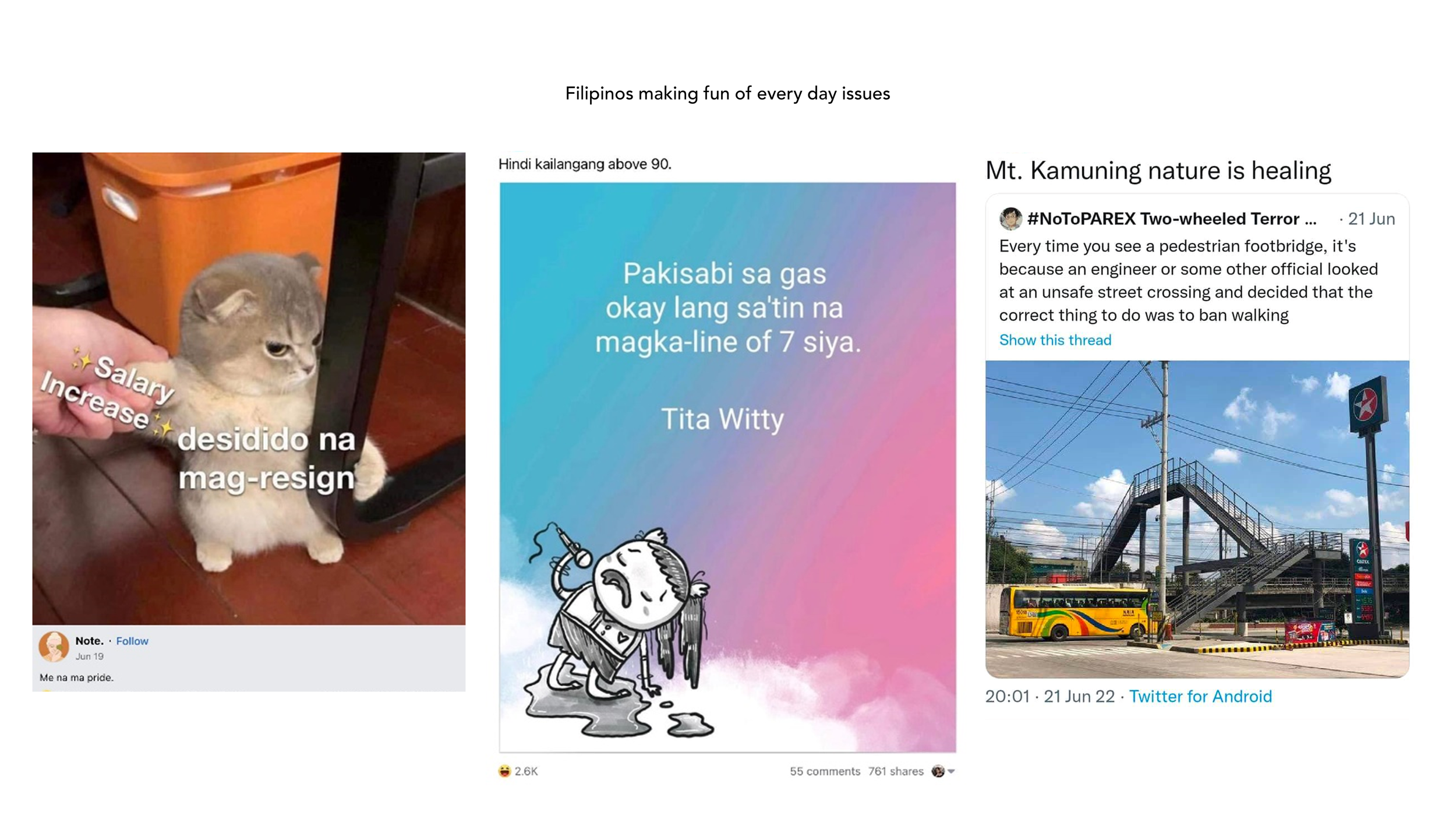Happy yet Stressed: Determining the Breaking Point?
In this article, we explore the recent trends on (1) the Filipinos’ increasing stress levels and (2) the public criticism of a public foot bridge, along with their possible implications.
Filipinos are known to be happy and positive people even in the toughest of situations. Statistics can vouch for it, as Gallup ranked the Philippines as the happiest country in the world, with a happiness index of +78 in 2019. Moreover, despite the pandemic, there was an observable declining trend in the percentage of Filipino workers who say they are stressed. From 58% in 2018, it went down to just 50% in 2021. Indeed, when the going gets tough, Filipinos get going but with an important addition – finding a way to laugh about it.
Yet, Gallup’s recent State of the Global Workplace survey reveals that Filipinos are currently among the most stressed-out workers. Although Southeast Asia is in the bottom half of the list when ranked by daily stress per region, the Philippines tops the list among SEA countries. Furthermore, the report reveals that the Philippines ranks 2nd on Daily Sadness and 3rd on Daily Anger across Gallup’s interviewees in SEA. Therefore, the surveys indicate that we, Filipinos, are both happy and stressed. What explains this conundrum?
We could find the trace to the answer in the “Mt. Kamuning” trend that surfaced in the same week. It refers to the 10-million peso EDSA Kamuning footbridge, which is notorious for its unusual steepness and height. It has trended before, but it caused a new buzz when the Netherlands’ Consul General Dirk Janssen commented on the non-pedestrian-friendly structure on Twitter last June 25. Accompanied by a photo of the bridge, his post has a caption that roughly translates to:
“There is no better way to make it clear to pedestrians that they don’t matter.”
What was striking about the tweet was the rank of the one who made it (a diplomat) and the approach he took. Unlike most Filipinos who subtly aired criticisms through jokes, Janssen's tone was explicit and direct: a frontal assault. And many Filipinos were gleeful with it because someone had finally said it in such a blunt manner. It is as if we share all these criticisms all along, but we opted to wait for someone to call it out; when someone does, we vent what we feel. In the meantime, while no one is calling it out, we rather keep our criticisms down or hidden in the form of a joke.
And this could explain why we are both happy and stressed: at a deeper level, we were using our jovial nature to deal with our frustrations because that is the only way we think we can handle them while avoiding confrontation. We seek to avoid a fight because we fear that our opponent would label us as walang utang na loob (ungrateful) or walang hiya (shameless); in the Filipino psyche, these are the two worst sins. Thus, we just keep whatever reservations or criticisms we have of anything to ourselves and, instead, trivialize them by making fun of them. But in the process, without realizing it, we become deeply affected by them, stressing us out.
Now, the natural question is: if Filipinos are like that, how do we convey that we are reaching the "breaking point"? Is there even a way to determine it?
There is no definitive answer to that, but to get a glimpse of the solution, it is essential for organizations, leaders, and policymakers to deep dive into Filipinos' behavior. And by deep diving, we mean you have to look beyond the survey numbers or trends. We must remember that trends are simply indicators of some behavioral phenomenon, but it is not the behavior phenomenon itself. As the case studies show, looking at the Gallup survey numbers alone obscures the more profound behavioral truth that tips the Filipinos' decision-making. You must go to the heart of the Filipino psyche by asking why and how they make decisions over time.
And that is where sociocultural research becomes vital. Sociocultural research enables you to answer these questions by dissecting the social, cultural, and economic context upon which customers make their decisions. Only by doing so will you be able to capture the behavioral nuances that typically nudge a person to behave in a certain way. This understanding empowers you to influence their behavior so they can avoid reaching that breaking point.
These trends illustrate the impact that behavioral nuances play in influencing people's emotions and attitudes. They highlight that beneath the surface sentiments lie profound behavioral realities that we must understand and deal with. These truths call for leaders and organizations to revisit their customers' and employees' decision-making processes over time. That way, they can enhance their ability to influence behavior through sound policies, products, etc.
Fourth Wall is the pioneer sociocultural research firm in the Philippines. We enable consultants and organizations to leverage behavior to make optimal decisions that lead to adaptation and growth.




